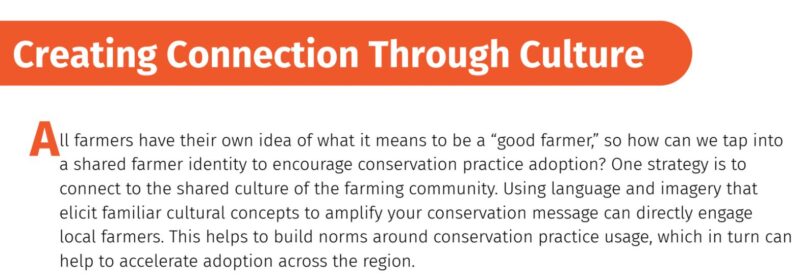Effective outreach planning should always begin by establishing clear desired impacts. We have to have a clear idea of what we are trying to accomplish before we set out with activities and programming. In the logic model framework, we can think about two types of goals: impacts and outcomes. This page explains the differences between these and how we can use them in our outreach planning efforts.
This is the change in the world you are trying to achieve with your outreach efforts. What do you want agriculture in your area to look like in 5-10 years? How will farming the environment be improved? See the worksheet SMART Planning: Designing Effective Outcomes for more information on how to ensure you are establishing clear outcomes.
Example: In 5 years, 20% of farmers in my county will be using a winter cover crop in their rotation.
These are the specific changes you want to achieve with your efforts that will result in the impacts you identified above. These will reflect differences in your audience as a direct result of your efforts. Think of these as the necessary changes in attitudes, beliefs, or knowledge that will lead to more conservation implemented by these farmers.
Example: More farmers will have positive attitudes toward no-till. Farmers in my area will recognize the soil health benefits of using cover crops.
Being clear about what you are trying to achieve in both the local environment and among the audiences you work with, is a critical step in outreach planning. Keep these in mind throughout your engagement work to ensure that your activities are helping you achieve your desired goals and outcomes. See the worksheet Planning for Outcomes to begin designing outreach activities that will help you achieve these outcomes.
 Download: Establishing outreach goals
Download: Establishing outreach goals
